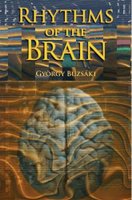Review: Rhythms of the Brain
 A good popular science book will provide laypeople with an exciting perspective on the state of the art in a particular field. But this comes at a price: typically such books are written from just a single theoretical perspective, glazing over or altogether ignoring details that might be considered controversial within the academic community. To understand these deeper issues, an interested layperson would have to trudge through academic textbooks, or for the most cutting-edge topics, delve into the often impenetrable peer-reviewed literature.
A good popular science book will provide laypeople with an exciting perspective on the state of the art in a particular field. But this comes at a price: typically such books are written from just a single theoretical perspective, glazing over or altogether ignoring details that might be considered controversial within the academic community. To understand these deeper issues, an interested layperson would have to trudge through academic textbooks, or for the most cutting-edge topics, delve into the often impenetrable peer-reviewed literature.And then there are the absolute best popular science books. György Buzsáki's "Rhythms of the Brain" is of this latter variety. Not only does it provide a wide-ranging and readable introduction to neural oscillators, but every crucial argument is carefully footnoted with deeper explanations, some qualifications, and suggestions for additional reading.
"Rhythms of the Brain" begins with the premise that "structure defines function," and then outlines how the architectural principles of neural networks can give rise to neural oscillations. In the process, he meticulously covers topics like the complex, small-world, scale-free connectivity of cortex without resorting to complicated equations - the concepts are carefully grounded in real-world analogies and lay terms.
Buzsáki introduces several other topics that are usually found only in mathematically sophisticated academic works on the brain: for example, how "neural noise" can actually enhance processing through stochastic resonance and the 1/f or "pink noise" signature of EEG, mechanisms of "phase precession" and "phase reset" within nested oscillations, and the difference between relaxation and harmonic oscillators.
It is perhaps not surprising that Buzsáki is the author of such a book - holding both an MD and a Neuroscience PhD, Buzsáki's has published over 185 peer-reviewed publications, 10 book chapters, and 2 edited volumes spanning the last 35 years. His lab at Rutgers consists of a veritable army of researchers, including 8 post-docs and 4 grad students.
After reading "Rhythms of the Brain," it's easy to understand why there's so much demand for working in this laboratory. There's potentially an entirely new field of neuroscience lurking in here: Buzsáki discusses distinct oscillations with frequencies spanning 4 orders of magnitude, from the ultra-slow ("slow 4": .02 Hz) to the ultra-fast ("high gamma": 600 Hz) and everything in between.
Although this book is probably not suitable for entry-level laypeople (a good popular science introduction to the brain and its rhythms is "I of the Vortex"), it is virtually guaranteed to please everyone with some previous neuroscience experience, literary or empirical. Beware also that "Rhythms of the Brain" is quite dense (with the copious footnotes constituting almost an entire second volume!) and is therefore more likely to be enjoyed with caffeine than as a relaxing bedside book.
Some may criticize "Rhythms of the Brain" for failing to offer a comprehensive "big picture" summary of how each of these oscillations contribute to cognition (although hints are there, to be sure). For me, this is actually a strength of the book; half-informed conjecture and hasty extrapolation ruins far too many popular "science" books on the brain, and they become prematurely outdated. Besides, such speculation is far more fun to do as a reader - and for this Buzsáki has provided fertile ground.


0 Comments:
Post a Comment
<< Home